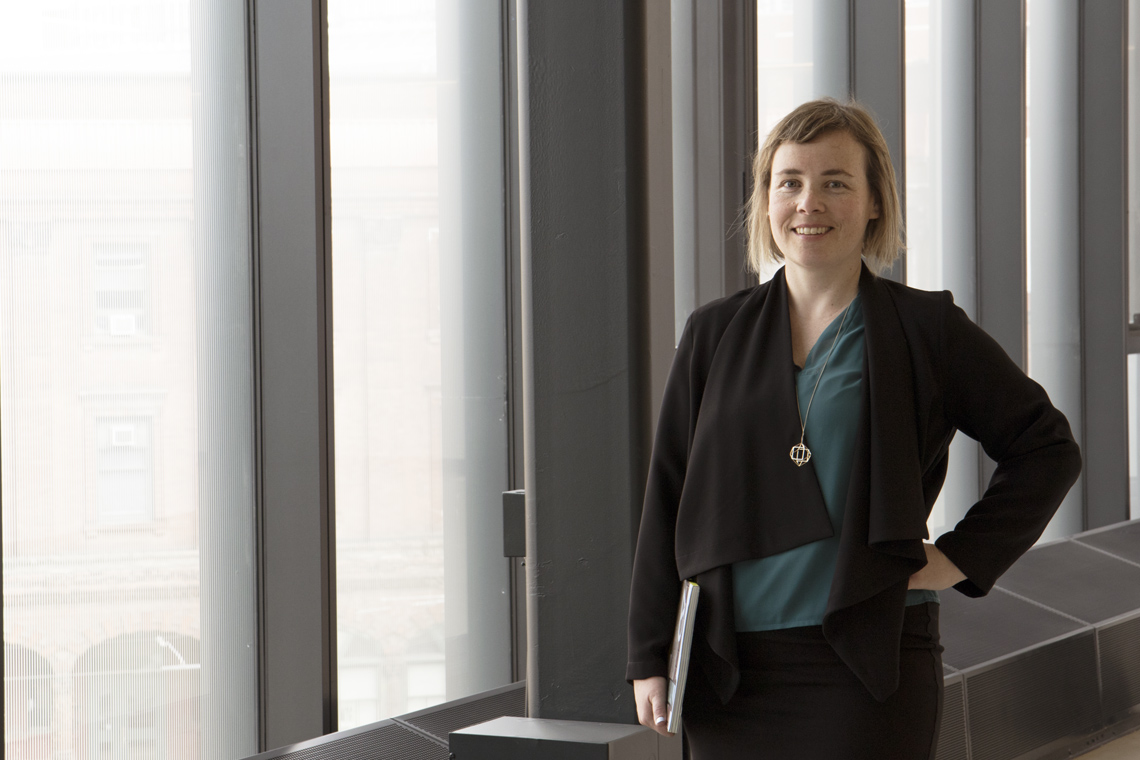
17.04.17 - Embracing superarchitecture: Terri Peters on how design can be green and good for our health
By Romi Levine
cross-posted from U of T News
University of Toronto post-doctoral researcher Terri Peters admires the sunlit graduate studio space on the third floor of the just-renovated One Spadina building – the new home of U of T’s John H. Daniels Faculty of Architecture, Landscape, and Design.
The large north-facing windows and the numerous skylights brighten the space without the need for artificial light.
Peters says this space is not only aesthetically pleasing, but it also has benefits to our well-being.
“You’ve got the natural light coming in and there's numerous studies that show increased productivity in day-lit environments,” she says. “Daylight is central to architecture and experience and to energy savings.”
Peters is the Daniels faculty’s only post-doctoral researcher. She studies how architecture and design can be used to both improve people’s well-being and be sustainable – calling the design practice “superarchitecture.”
“The idea with superarchitecture isn't that our buildings will get better, it's that we get better being in our buildings,” she says. “What if the jeans I was wearing were also toning my thighs and exercising me or my jacket should be charging my phone – all these things in our environment are designed and could be making us better.”
Peters guest-edited the most recent edition of Architectural Design Magazine on the topic of designing for health. Starting next month, she will be researching superarchitecture as a cross-disciplinary initiative between Daniels and the School of the Environment in the Faculty of Arts & Science.
“U of T has so many different people working on different parts of this puzzle,” she says. “No one discipline can claim all of this territory.”
There has been plenty of proof that improving our surroundings – by boosting natural light, adding greenery and plenty of fresh air – makes us feel healthier, says Peters.
“I've been gathering the evidence for this stuff. If we can prove it and we can argue it better, maybe it'll become a part of green building.”
There are certifications that measure well-being and sustainability, such as the WELL and LEED standards – but there needs to be a more comprehensive system, she says.
“There are challenges because fundamentally it should be about taking the existing condition and making it better whereas these green and wellness rating systems are about benchmarks and standards and measurement – they don't compare itself to itself,” says Peters.
Toronto is beginning to embrace superarchitecture, she says. The Active House – an experimental home designed by architecture firm superkül, which is led by U of T instructor Meg Graham – is putting these principles into practice.
“They're measuring green-ness and health and well-being and they're a bit like demonstration houses – they're not a mainstream way of building but they could be,” says Peters.
As these small examples of superarchitecture become more prominent, people will start to see – and feel – the benefits of conscientious design, she says.
“As people see it paying off, they’ll want these spaces and environments more – it will take off.”
Image, top: Terri Peters says the natural light at U of T's One Spadina building has "super" qualities (photo by Romi Levine)
Image, above: The Centennial Park Active House in Toronto was designed by superkül architects with Great Gulf and Velux Canada. It's an example of how superarchitecture can be used when designing homes, says Peters (photo courtesy of Terri Peters)

